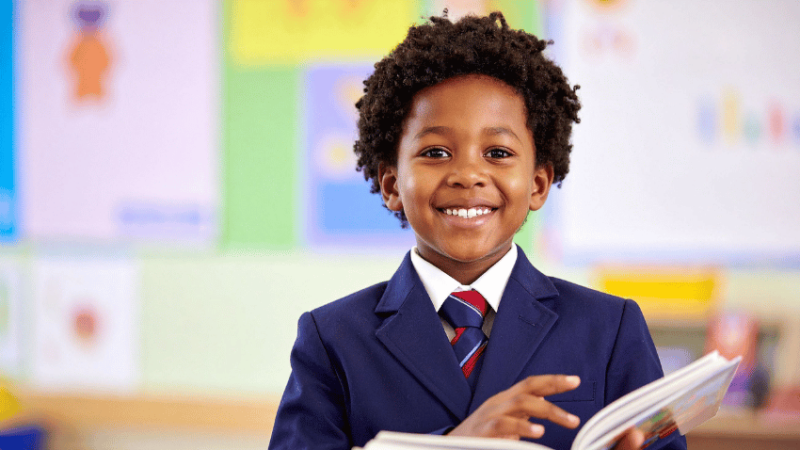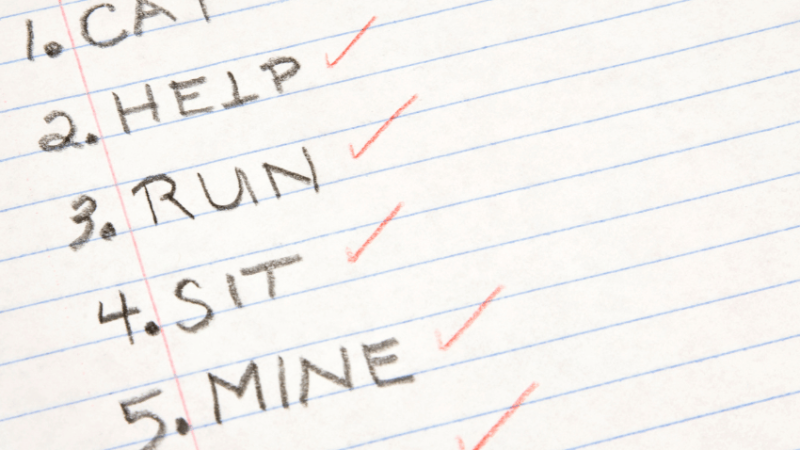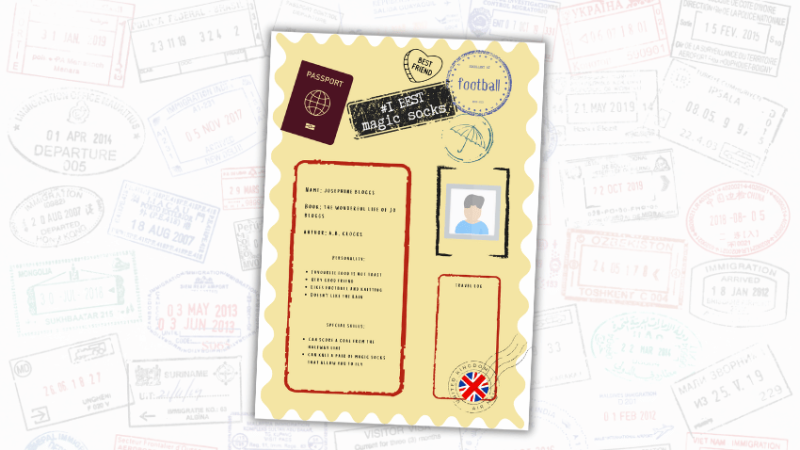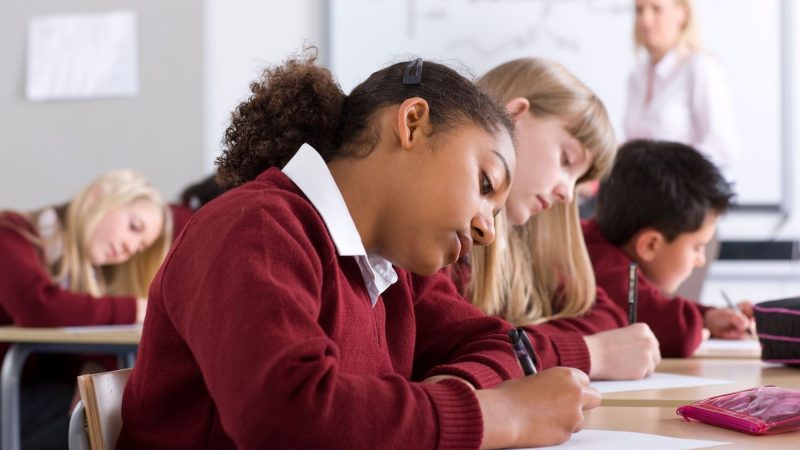Clauses – Ultimate KS1 and KS2 guide & resources
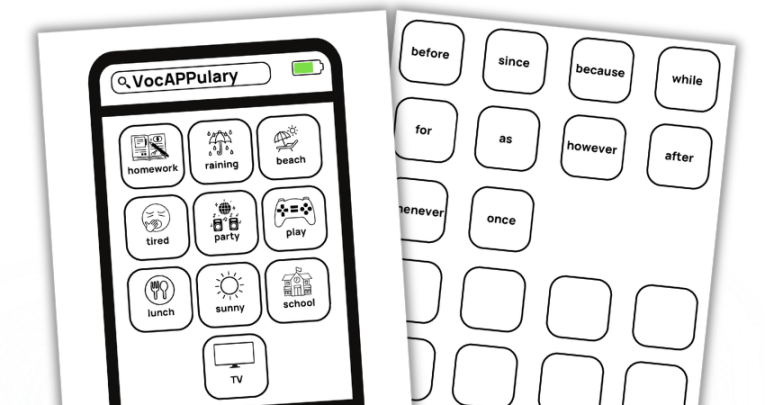
Help children know their relative clauses from their subordinate clauses, their independent clauses from dependant causes, and more, with these resources and worksheets for primary school…

- by Teachwire
- Classroom expertise and free resources for teachers
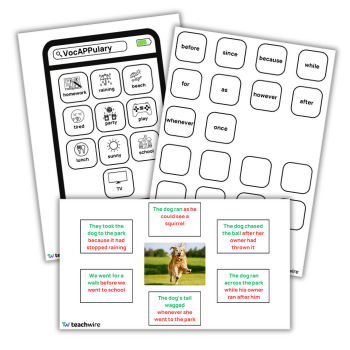
Clauses are a fascinating aspect of grammar that form the very foundation of how we construct sentences. Understanding clauses is not only a key academic skill but also a gateway to unlocking the full potential of our young learners as communicators.
In this post, we’ll unravel the world of clauses, exploring main clauses that stand tall on their own, subordinate clauses that lean on others for support, and embedded clauses that add delightful details to our sentences. We’ll also venture into the realm of relative clauses and making our writing richer and more expressive.
We’ll be sprinkling in engaging teaching ideas and pointing you towards valuable resources to make pupils’ learning journey both enjoyable and effective.
So, are you ready to embark on this grammatical expedition with your primary students? Let’s open the door to the world of words and sentences…
- What are clauses?
- What is a main clause?
- Main clause examples
- What is a subordinate clause?
- Great subordinate clause KS2 teaching ideas
- More subordinate clause KS2 resources
- What is an embedded clause?
- Ideas for teaching embedded clauses
- What is a relative clause?
- Master relative clauses with this clever folding technique
- More relative clauses resources
What are clauses?
A clause is a group of words that has a subject and a verb. In simpler terms, it’s like a little team working together in a sentence. Let’s break it down:
- Subject: The “who” or “what” in the sentence – usually a person, place, thing, or idea. It’s the star of the clause.
- Verb: The action word or what the subject is doing. It tells us what’s happening in the sentence.
Examples:
- Simple Sentence:
- The cat purrs.
- Here, “The cat” is the subject, and “purrs” is the verb. Together, they make a clause.
- The cat purrs.
- With More Detail:
- The cat, who loves sunny spots, purrs.
- “The cat, who loves sunny spots” is a clause because it has a subject (the cat) and a verb (loves).
- The cat, who loves sunny spots, purrs.
Understanding clauses is like knowing the building blocks of sentences. It helps us put words together in a way that makes sense. Sometimes, a sentence can have more than one clause, and they work together to tell a bigger story.
Clauses and sentences PowerPoint
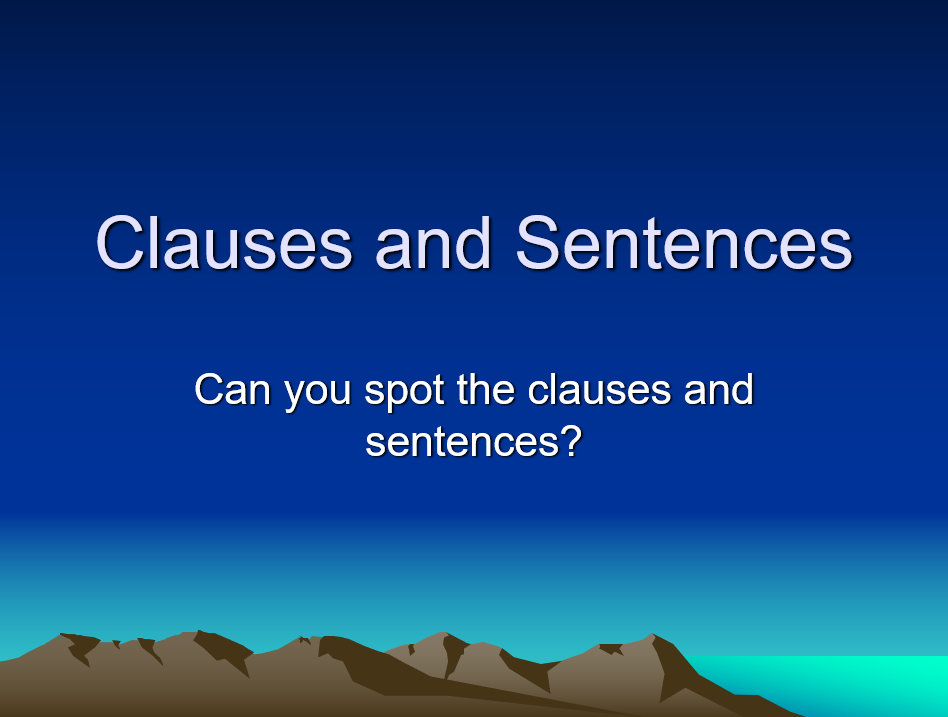
This PowerPoint from Primary Resources runs through what clauses are compared to sentences. It asks children to spot the clauses in sentences, and make sentences more interesting by adding their own clauses.
What is a main clause?
A main clause is like the captain of a sentence – it’s the big boss that can stand all by itself and make complete sense. Think of it as the leader in a group of words. A main clause has two important parts:
- Subject: This is the “who” or “what” in the sentence. It’s like the main character of a story.
- Verb: This is the action word that tells us what the subject is doing. It’s like the exciting part of the story that keeps us interested.
Examples:
- The sun shines.
- In this sentence, “The sun” is the subject, and “shines” is the verb. Together, they make a main clause because they can stand alone and make complete sense.
- She eats apples.
- “She” is the subject, and “eats” is the verb. This is another main clause because it’s a complete thought.
Main clause examples
- This food tastes bad.
- We bake cookies every Sunday.
- The girl was reading her book.
- My cat is asleep by the window.
What is a subordinate clause?
A subordinate clause is a group of words in a sentence that gives more information about the main part of the sentence. It can’t stand on its own as a complete sentence because it relies on the main part to make sense.
Think of it like a helper. The main part of the sentence is the boss, and the subordinate clause helps by adding extra details. For example:
Main part: “I went to the park.” Subordinate clause: “because it was a sunny day.”
So, when you put them together, you get: “I went to the park because it was a sunny day.” The main part is “I went to the park,” and the subordinate clause – “because it was a sunny day” – tells you why. It helps you understand more about the main part of the sentence.
Great subordinate clause KS2 teaching ideas

Assistant headteacher Rebecca Jakes explains how to make this area of grammar stick…
There is always a group of children who just can’t seem to grasp subordinate clauses and how to use them. Often pupils write them, but don’t add commas in the correct place or they use them but end up with a grammatically incorrect sentence.
All too often during writing moderation, this is one of the elements missing and holding a pupil back from the expected standard.
So how can we help these pupils understand when, why and how to use subordinate clauses? There are no magic wands, but here are some of the strategies that I have found helpful. These strategies can be adapted to suit most year groups.
App sentence builder
This versatile ‘VocAPPulary’ resource, which I found on Emily Weston’s Twitter page, is an engaging way for pupils to practise writing sentences with subordinate clauses.
Write subordinating conjunctions on the ‘top’ and scenarios for writing on the ‘bottom’. Pupils can then write sentences that use the subordinating conjunction and the theme. For instance:
I finished my homework before going to football practice.
I stayed inside since it was raining.
Because the weather was hot, we went to the beach.
While we waited for the rain to stop, we watched TV.
Challenge greater depth writers to place the subordinate clauses at the beginning, middle or end of the sentence. For example: “Lucy decided to go to bed early for she was very tired” or “Since it was raining, all the children stayed inside to play.”
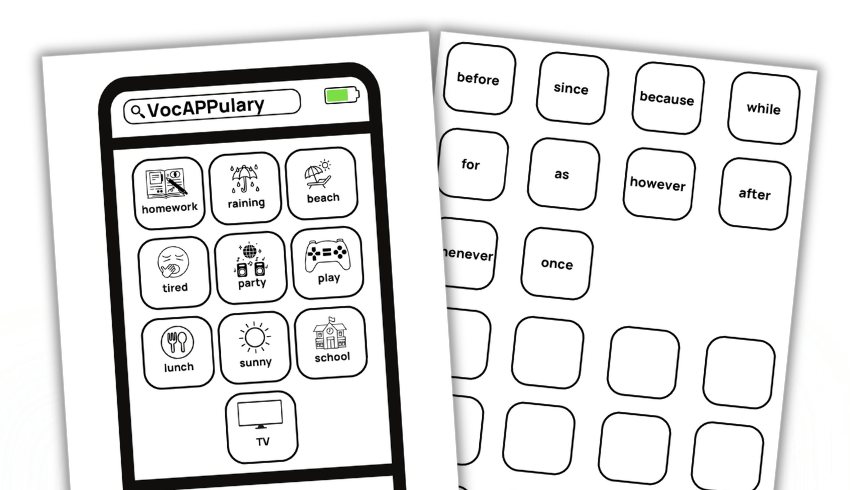
Click on the image above to download this resource
Colour coding
Colour coding parts of a sentence is a particularly effective way of teaching subordinate clauses early on, especially if you’re supporting SEND pupils.
Provide pupils with a picture as a stimulus, then generate main clauses to describe the picture. These are the ‘green’ sentences. You can do this as a whole class or in pairs.
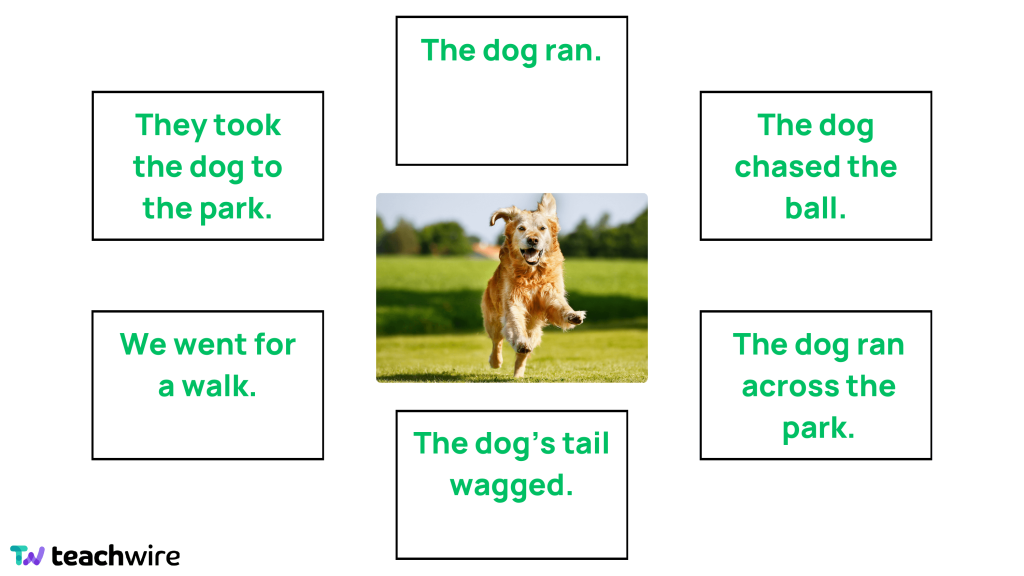
Once you’ve created the main clauses, generate some subordinate clauses. Colour code these as red to highlight that they can’t work on their own. Pupils need to think carefully about where to put them and which punctuation is needed.
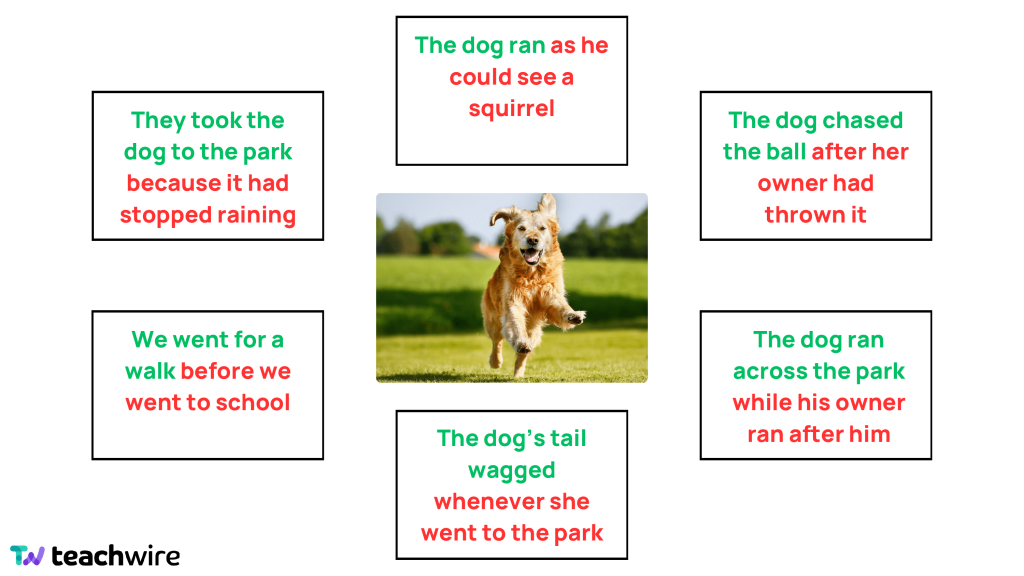
Click the image to download PowerPoint and PDF versions of this template
Now pupils have a bank of main and subordinate clauses, model how to put them together. For most pupils, it’s more effective to focus on practising placing the subordinate clause in one position in the sentence (add this in as a greater depth challenge).
To help make the concept stick, provide pupils with coloured pencils. Ask them to write each part of the sentence in different colours. Once pupils understand this task, you can repeat it with them generating their own parts of sentences.
Text marking
Understanding where to put commas to separate clauses is one of the most common misconceptions in writing grammatically correct sentences.
To help pupils understand this, it helps if they can ‘hear’ the pauses that separate the clauses. That’s where text marking comes in.
You can easily build this strategy into whole-class reading sessions to practise prosody. Ask pupils to read a text aloud, noticing where long and short pauses occur and marking where they hear them. Here is an example:
Before she could go to the park, / Lucy had to do her homework. // She grabbed her bag and pulled out her English book.
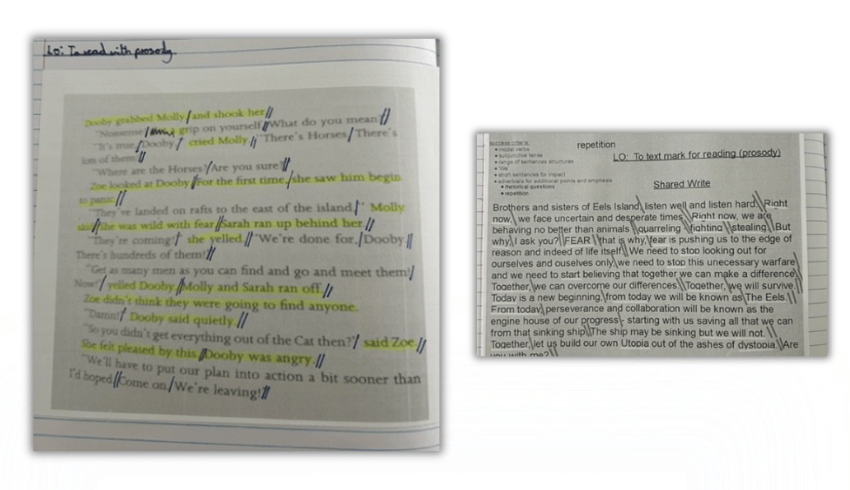
Once pupils get used to hearing where the punctuation goes, they can aurally rehearse their sentence before writing, recognising where the punctuation should go.
This is also a really useful strategy for proof-reading and editing. Pupils who miss out a lot of punctuation when they are writing can go back and text-mark paragraphs to identify missing or incorrect punctuation.
Using these strategies has really helped me when teaching subordinate clauses. However, my biggest tip is to ‘drip feed’ the concept little and often. Making it memorable and fun with regular practice will help your pupils grasp how to use subordinate clauses and will make the learning stick.
Rebecca Jakes is assistant headteacher and SENDCo at Weeke Primary School in Winchester. Previously she has worked as an associate English advisor.
More subordinate clause KS2 resources
Year 6 revision pack
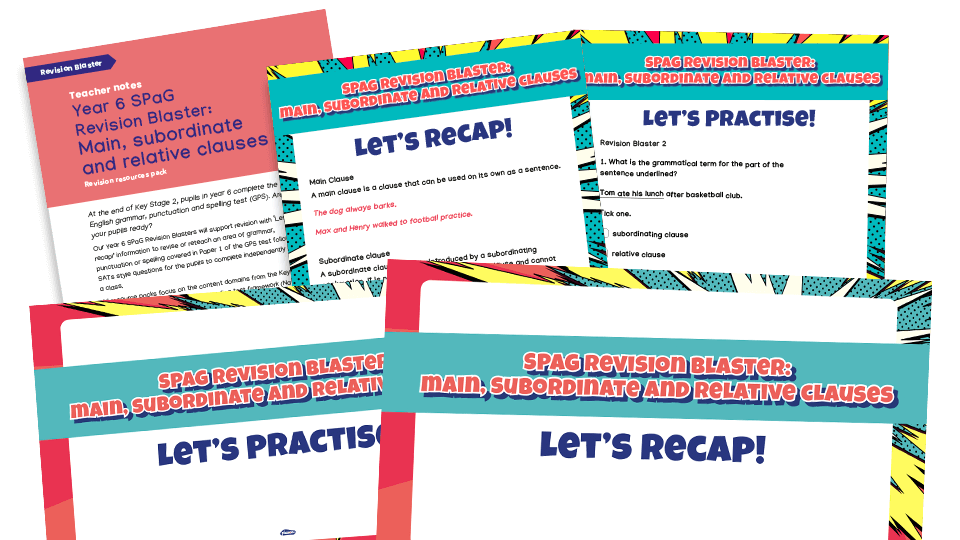
This free Year 6 SPaG revision pack focuses on main, subordinate and relative clauses. There’s a recap section, followed by SATs style questions to practise.
Clauses question sheet
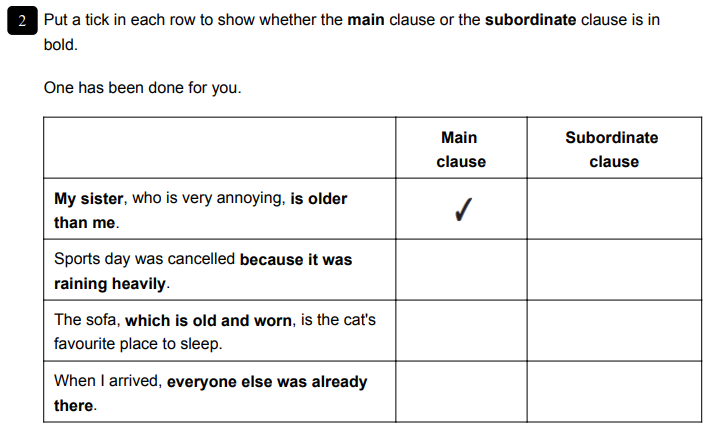
This 20-page PDF has a whopping 41 questions on clauses, including subordinate clauses, for children to do at home or in school.
Main and subordinate clauses worksheet
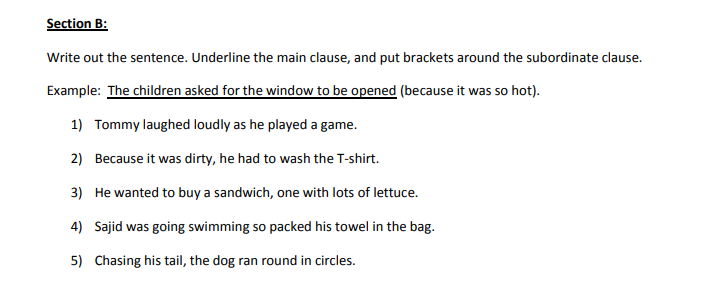
This free worksheet is divided into four sections, with 16 questions in total. The first asks students to say whether the underlined part is a clause or a phrase. In the second they need to write out the sentence, underline the main clause and put brackets around the subordinate clause.
In the third and fourth sections they need to add a subordinate and a main clause respectively to the sentences provided.
Subordinate clause examples
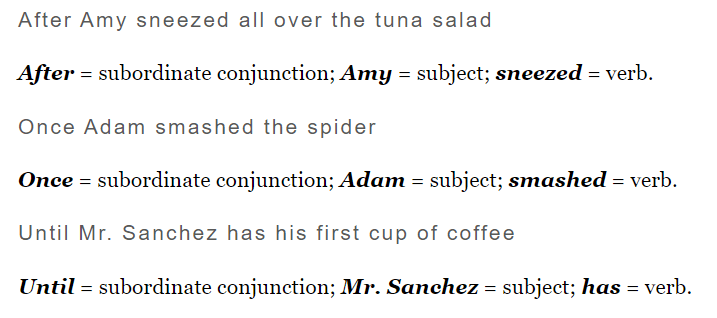
This page from Grammar Bytes has a good list of examples with explanations as to why they are subordinate clauses.
Year 5 clauses worksheets and answers
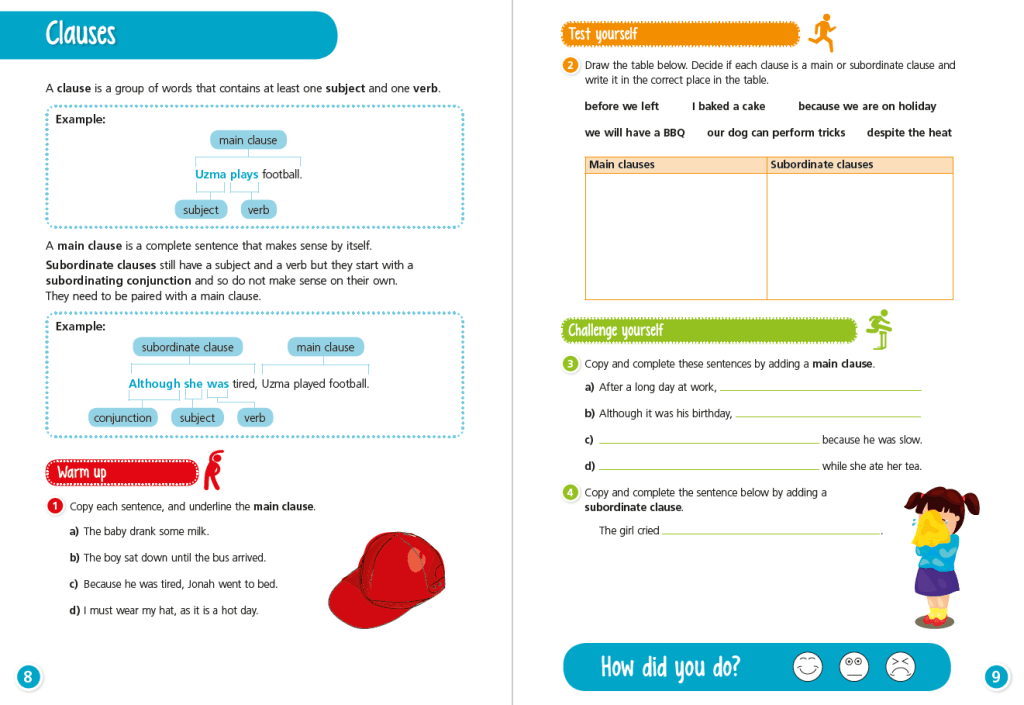
This resource is a six-page sample of Keen Kite’s Ready, Steady, Practise! – Year 5 Grammar and Punctuation series from Collins.
What is an embedded clause?
An embedded clause is a type of subordinate clause that is placed within another clause (rather than before or after), and is usually marked by commas.
The embedded clause is reliant on the main clause to work. You could remove the embedded clause and the main clause would still work as a complete sentence, but you couldn’t remove the main clause as the embedded clause would not work alone.
Embedded clause examples
- Her car, which cost a lot of money, is very nice.
- The horse, which had been running for a while, looked tired.
- My friend, the one I told you about, lives near here.
- Rebecca’s drum kit, which she bought second-hand, had seen better days.
- The wind, which was getting stronger as the evening went on, was whistling through the gaps around the windows and doors.
Ideas for teaching embedded clauses
Embedded clauses, Gangnam style
It takes a little while to get to the actual explanatory part of the song, but this teacher has done a Gangnam Style parody video talking all about embedded clauses and how to use them.
Embedded clauses, regular style
If you prefer videos not relying heavily on/being dated by the zeitgeist from 2012 (that long ago already? Wow!), here’s a simple teacher-and-whiteboard combo. Timeless.
Complex sentences challenge worksheet
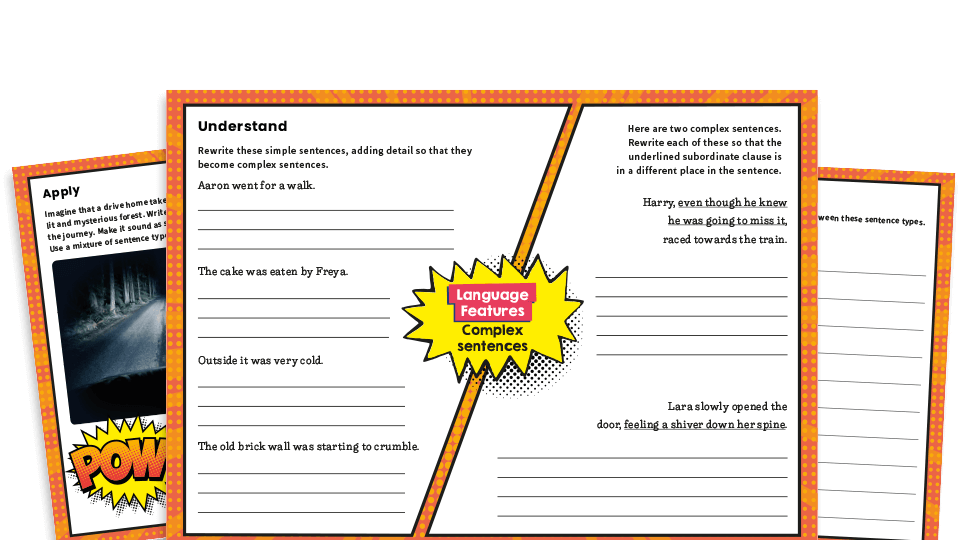
This worksheet from Plazoom is an excellent way for KS2 pupils to revise and practise recognising and using complex sentences, such as those that contain embedded clauses.
It contains examples of the writing feature and five different challenges, which can be tackled during one lesson or spread over a number of teaching sessions. Questions encourage creative responses as well as revision, and include interesting images to stimulate ideas.
Embedded clauses question sheet
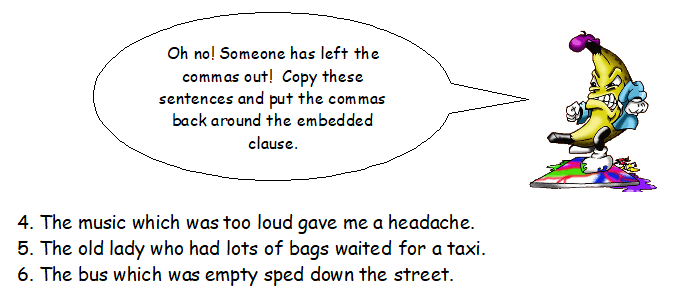
This simple Word doc worksheet from Primary Resources has a range of embedded clause questions to work through, asking pupils to underline the embedded clauses, put the commas in the right place or insert embedded clauses into sentences.
What is a relative clause?
A relative clause is a group of words in a sentence that gives us more information about a noun. It helps to describe or identify the noun in more detail.
How to identify a relative clause
- Starts with “who,” “which,” “that,” “whose,” or “whom”: Look for these words in a sentence. They usually indicate the beginning of a relative clause. Example: The cat that is sitting on the mat is fluffy.
- Adds Information: A relative clause provides extra information about a noun. It helps us understand which one or what kind. Example: The girl who won the race is my friend.
Examples:
- The book that I am reading is interesting.
- In this sentence, the relative clause “that I am reading” gives more information about the noun “book.”
- The dog whose tail is wagging is happy.
- The relative clause “whose tail is wagging” tells us more about the noun “dog.”
More relative clause examples
- The boy who brought the cakes.
- The house with the red door and Georgian windows.
- The road which bends to the left.
- The dress that I wore to the party last week.
Master relative clauses with this clever folding technique
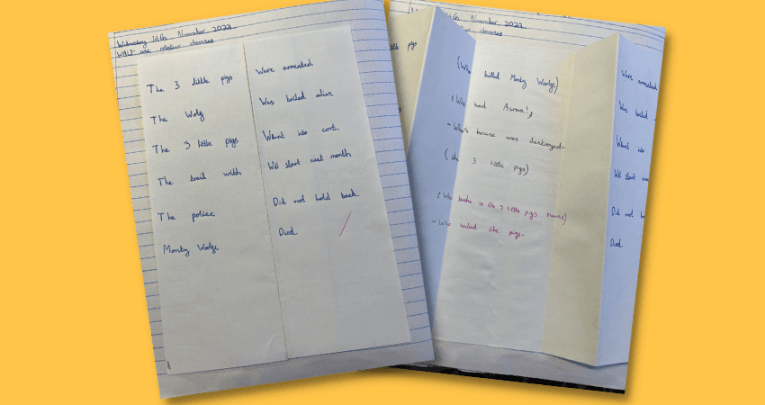
Conquer relative clauses without sending your class to sleep, with this low-tech idea for UKS2 from Sophie Bartlett…
You say ‘Year 5’, and teachers across the country hear ‘relative clauses’. Thanks to the national curriculum, they’re a common feature in many writing lessons and grammar tests as soon as children hit UKS2. So, when it comes to teaching, we need to make sure the concept really sticks.
This lesson focuses on embedded relative clauses: how to turn a simple sentence (or single independent clause) into a complex sentence by adding more information to the noun.
The physical aspect of the task helps children to quite literally see the difference between the two sentences.
Simple sentences
Start by thinking of seven or eight simple sentences to which children could add a relative clause in the middle.
These could be something abstract but, ideally, some would be related to the book you’re studying in English (e.g. ‘The boys at Camp Green Lake have to dig a hole every day.’) or a topic you’re teaching in another curriculum area (e.g. ‘Jupiter is the largest planet.’).
Doing this allows children to consolidate and apply their learning from other subjects.
Folding paper
Take some A4 paper in landscape orientation (this bit is fiddly so perhaps prepare these in advance!).
Mark about 6cm along from each side (left and right) and fold the sides underneath (mountain fold) so you have a rough square shape.
Now fold the two sides in to meet in the middle (valley fold) so you have a narrow rectangle.
When you open it out, you should have two mountain folds and two valley folds, forming a concertina effect.
Prepare sentences
With the paper folded up, have the children write the simple sentences you chose earlier across the page. Again, it may be easier to prepare this in advance, perhaps by writing them yourself and photocopying.
It is important that the first noun in the sentence (or whichever noun you would like the relative clause to follow) is on the first part of the page when folded, and the rest of the sentence (that should come after the extra clause) is on the second part.
So, when folded, the two parts of the sentence should be next to each other, but have a gap in the middle when the paper is unfolded.
For example: Jupiter [fold break] is the largest planet.
Extra information
Now the tricky part is done, show the children how unfolding the paper ‘extends’ the sentence.
They need to add extra information to the noun by adding a relative clause inside parentheses.
Remind the children of the three choices of parentheses – dashes, brackets and commas (these could even be written in advance on the mountain folds).
Write the most common relative pronouns on the board for the relative clauses (who, which etc.).
Impact of relative clauses
Using the ‘me, we, you’ strategy, complete the sentences and compare them with and without their relative clauses.
For example, when the paper is folded, the sentence might read, Jupiter is the largest planet, but unfolded, it reads: Jupiter – the fifth planet from the Sun – is the largest planet.
As an extension, you could write some relative clauses on the board and the children have to create a simple sentence around it!
Sophie Bartlett is a Y5/6 teacher, and English and curriculum lead. Follow Sophie on Twitter @_MissieBee and see more of her work at missiebee1.wordpress.com
More relative clauses resources
KS2 relative clauses worksheets
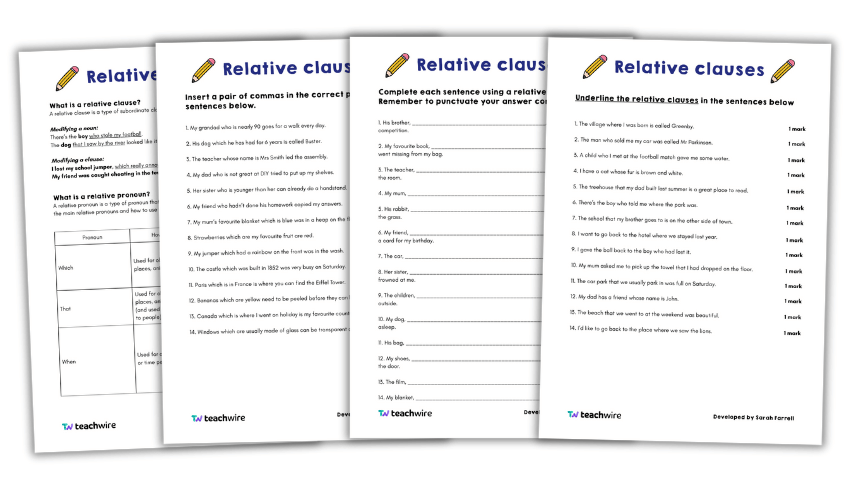
If you’re covering relative clauses in KS2, these free resources offer a clear, straightforward option. The information sheet breaks down relative pronouns (who, which, that, where, when, whose) with easy-to-follow examples, ideal for classroom displays, revision sessions or focused teaching.
The worksheets take pupils through the learning process in stages – starting with recognising relative clauses, then practising correct punctuation, and finally creating their own.
Relative clauses sentence-maker cards
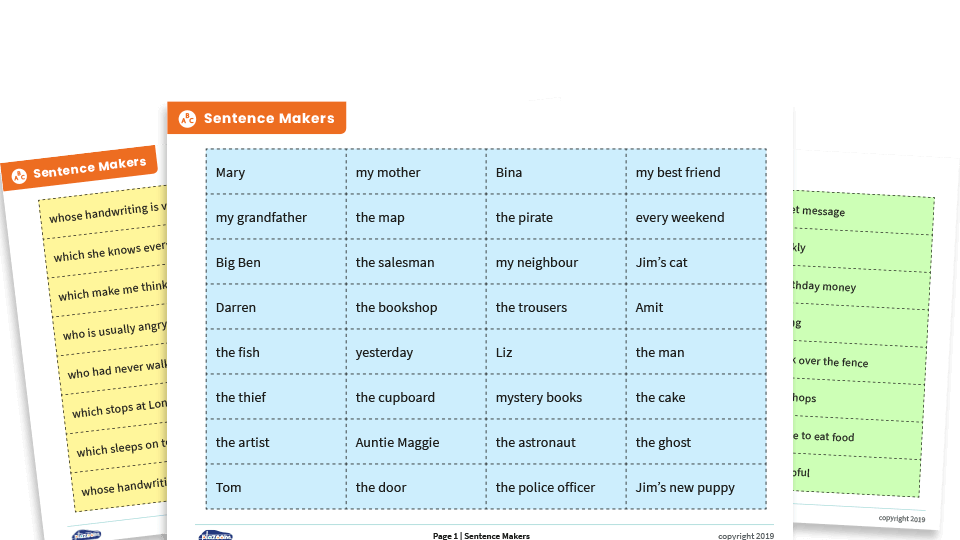
This hands-on resource from Plazoom is a great way for children to revise and practise using relative clauses.
Sentence fragments (blue and green cards) can be fitted together, then relative clauses (yellow cards) added – with some of the resulting complex sentences being funnier than others!
Relative pronouns and relative clauses grammar quiz
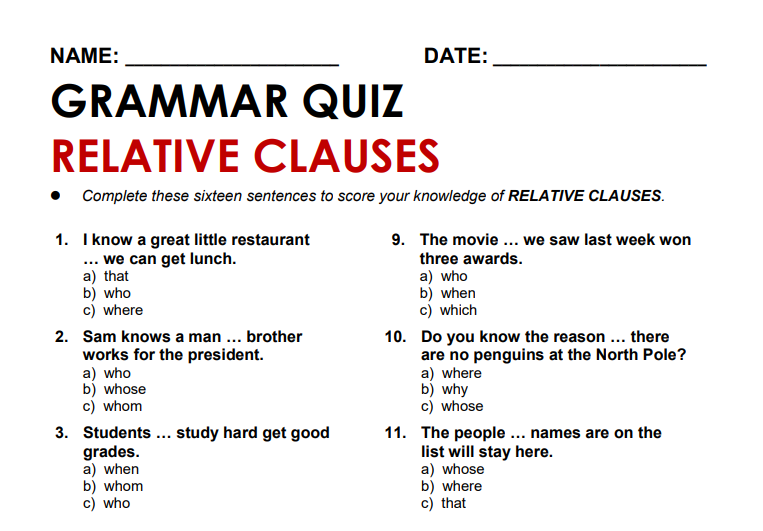
This quiz lets students get to grips with relative clauses with questions where the relative pronoun has been removed from each sentence. They just need to pick the correct one from a choice of three each time. Answers are included.
Relative clause Year 5 challenge

This Y5 grammar worksheet from Plazoom helps students practise and revise using relative clauses, by getting them to add relative clause to sentences, write three sentences about an image using a relative clause in each, spotting relative clauses in sentences and more.
Create sentences with relative clauses
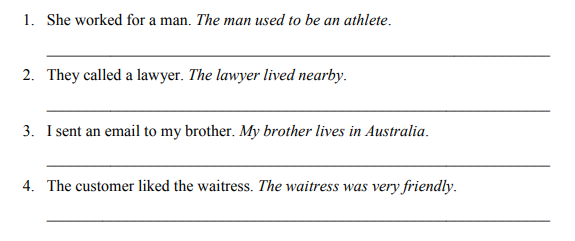
In this exercise, students are given two short sentences, which they need to rewrite as one by adding a relative pronoun.
5 | Tricky grammar story starters: Relative clauses

This Plazoom resource session provides a motivating and memorable image to stimulate discussion, before introducing relative clauses. Children have time to practise using this feature, before undertaking a short writing task to apply what they have learnt in the context of creative writing.
Relative clauses grammar worksheet
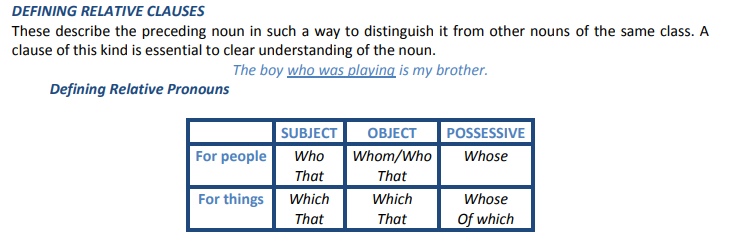
This 10-page PDF is packed with info and exercises on relative clauses for you to use as a guide in your teaching or to take activities from.
It describes defining and non-defining relative clauses before offering a whopping 25 multiple-part questions for students to try.
Relative clause games

This list contains 24 defining and non-defining relative clause games that you can try with students and adapt however best you see fit. There are sentence-building activities, story creation games and more.





